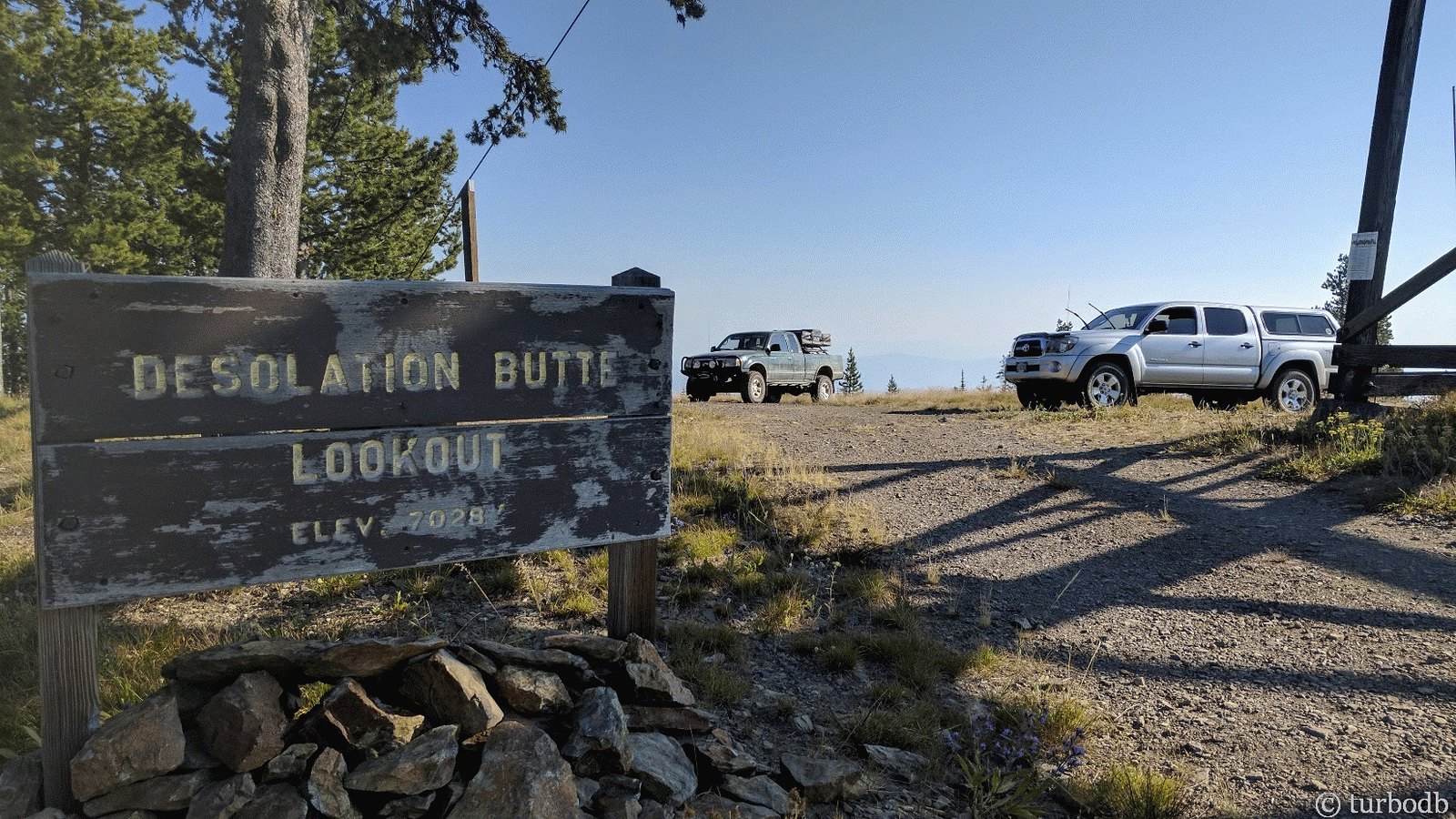August 2, 2017.
Having gotten in late, we woke up a little later - you know, 6:30am - the morning of Day 5. The day was full of anticipation for us, since this was the leg that had bested us in May, so we were immediately out of bed and exploring Frazier Lookout.

Turns out that it's been closed (too dangerous) since 2007, but that didn't stop me from climbing up a couple of levels to check out the view.
We also explored the super-sketchy lookout house, which was still in reasonable condition on the outside (save some broken windows) and looked as though the last staffer had just "walked out" on the last day the lookout was manned.
There were papers, magazines, and cookware left in the cupboards, a single bullet hole in the hall mirror, and a plastic chair setup in front of the window that looked out towards the lookout tower.
We didn't linger.



After some exploration, we made a quick breakfast of cereal and fruit and packed up the truck. As we drove down the hill, we encountered the same cows that had caused the trouble the night before, and proceeded to herd them nearly two miles down the road, before they finally ran off into the woods.
Boy, were those cows fat.
For an hour or so, we drove along the roads we'd recently cleared. As the miles passed, we saw a dozen or so trees we'd cleared, as well as the spots we'd camped on our previous jaunt.
And we made great time. Amazing time really. Within an hour, we were at the sign for Malheur ford - the same crossing that had turned us around in May, water "balls deep" and fast moving as I waded across to scout it.

We continued on, excitement building. Fields that were bright green were now golden. Our hopes raised that water levels would be down.

And then we arrived. Immediately we knew that there'd be no turn around today. The water wasn't just lower, it was almost a joke. In fact, it would have been even lower except for a rock dam that had been built to hold some of the water in the ford. @mrs.turbodb headed across, prepping to take pictures of the crossing.



Yeah, two feet lower than last time - this wasn't going to be a problem. I headed across in the truck.






And with that, we continued up the other side of the canyon, to a beautiful view we hadn't experienced on this route the last time we visited.


Me: "Come take a picture with me."
@mrs.turbodb: "Hahaha, I see what you're doing here." (as I make sure the truck is framed in the background)

As we continued on, we rejoined our route from May, approaching Crane Camp and the second ford (this time of the North Malheur River). Along the way, marveling at the elements of the landscape that were the same, as well as those that were different (generally, much drier).


We even took a couple of pictures that we'd taken the last time, just for laughs. (Ironside Mountain in the distance.)


By 10:30am, we were at Crane Crossing. This was the point where, two months earlier, we'd turned around after three long days of clearing trees from Seneca. It amazed us how two short months could make such a big difference, and I decided that I was going to walk this one too, if for no other reason than to cool off a bit.
I might have walked it more than once, the cool water feeling terrific on my (5-days stinky) feet.



We also setup @mrs.turbodb's phone to record the crossing. "It'll be fine here," I said as I set it up. "There's no way the wave will come this far up the bank."
Usually I'm right about these kinds of things. Let's ignore whether I was right this time, and instead note that it didn't really matter - three seconds after starting the video, the phone turned itself off, as it "overheated."
Windows Phone for the fail.
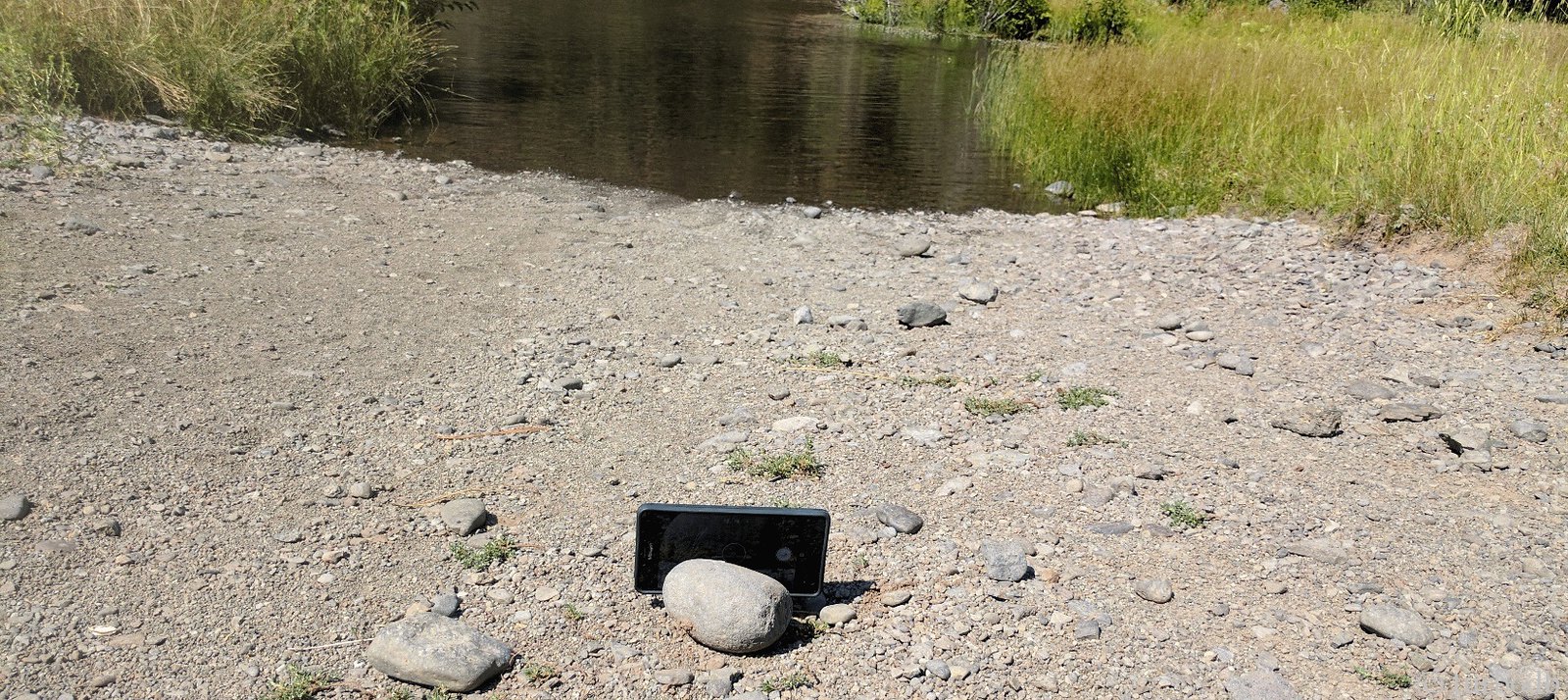
We still got some pics though, and I drove a bit faster (which may have contribute to the wave size), having a bit of fun.




And with that, we were once again in uncharted territory on the OBDR. As we pulled away laughing, we looked forward to completeing the trail - we knew there was nothing that would stop us now.
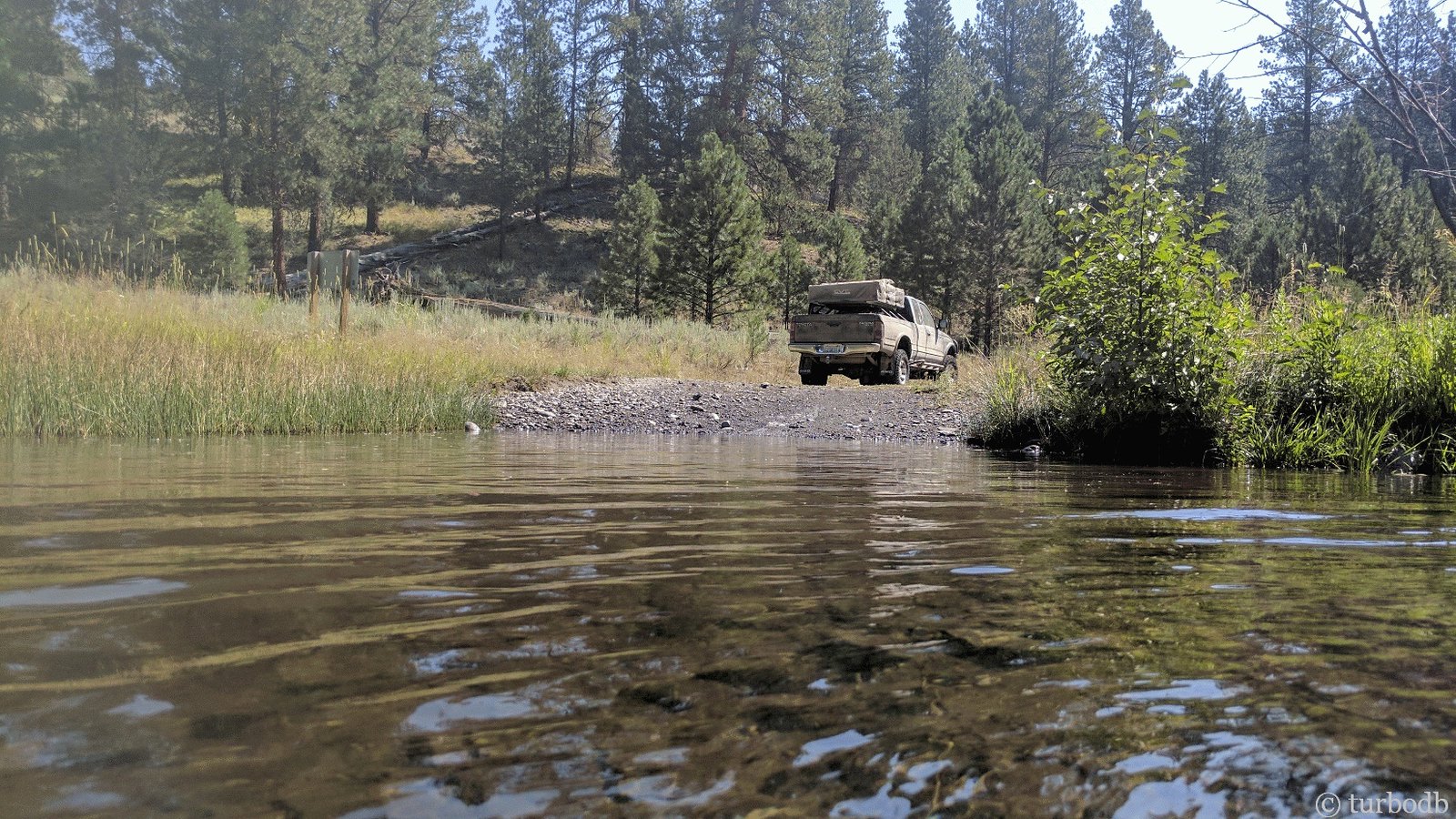
We passed in and out of forest and high desert tundra - the roads varying from dirt to rocky hill climbs.
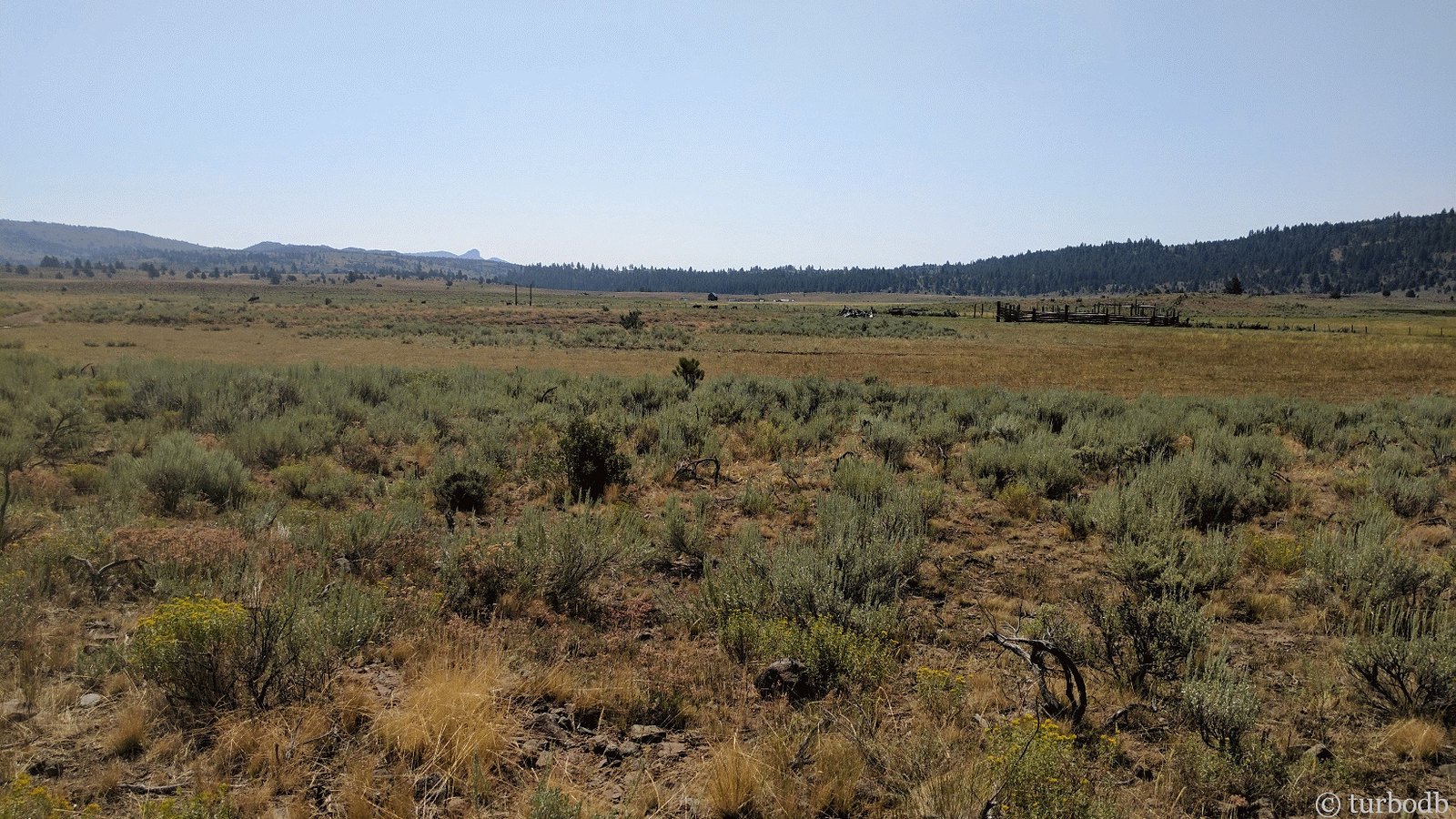
Eventually, we entered the burn area from the Canyon Creek Complex fire of 2015. The fire burned 67,000 acres and 26 homes were lost. The devastation was jaw-dropping, but we knew that in the end, it was a necessary result of the poor forest management, and in the long run would result in a healthier forest.




As we passed through the burn area (and the campgrounds it contained), we could see our destination in the distance - Table Rock Lookout. Our plan was to arrive shortly after noon and eat lunch in the lookout (or at least the shade of the lookout).

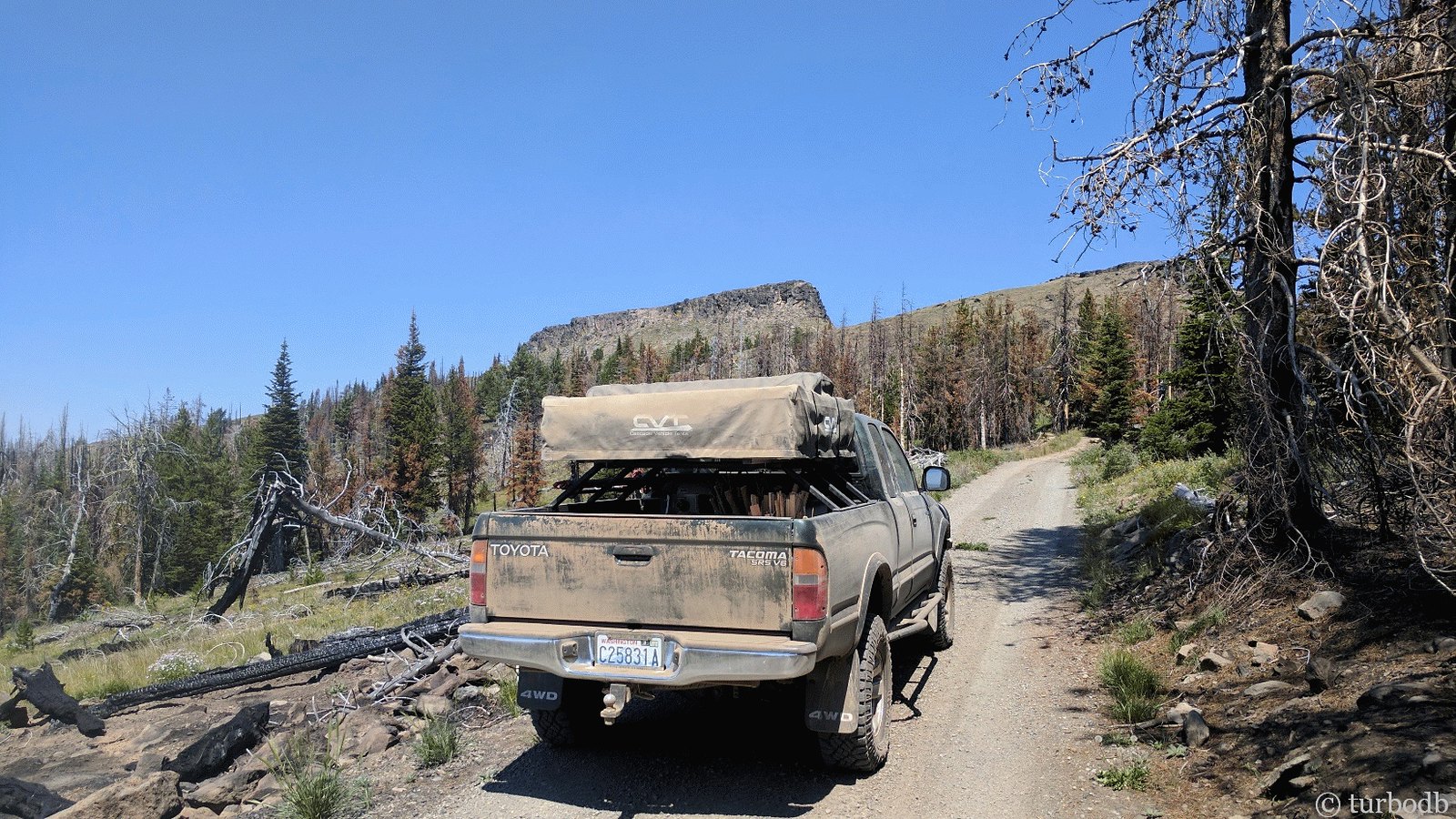
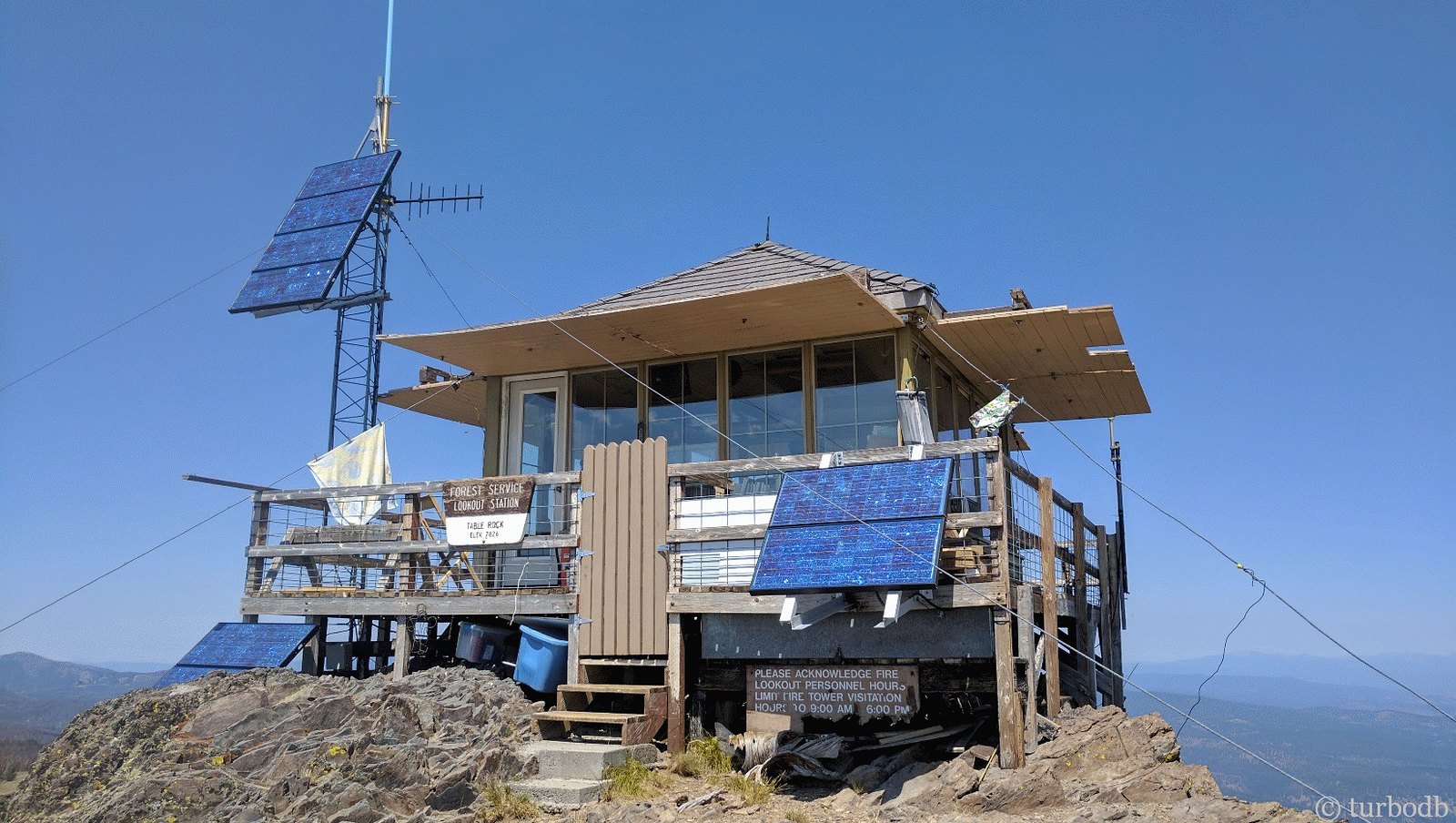

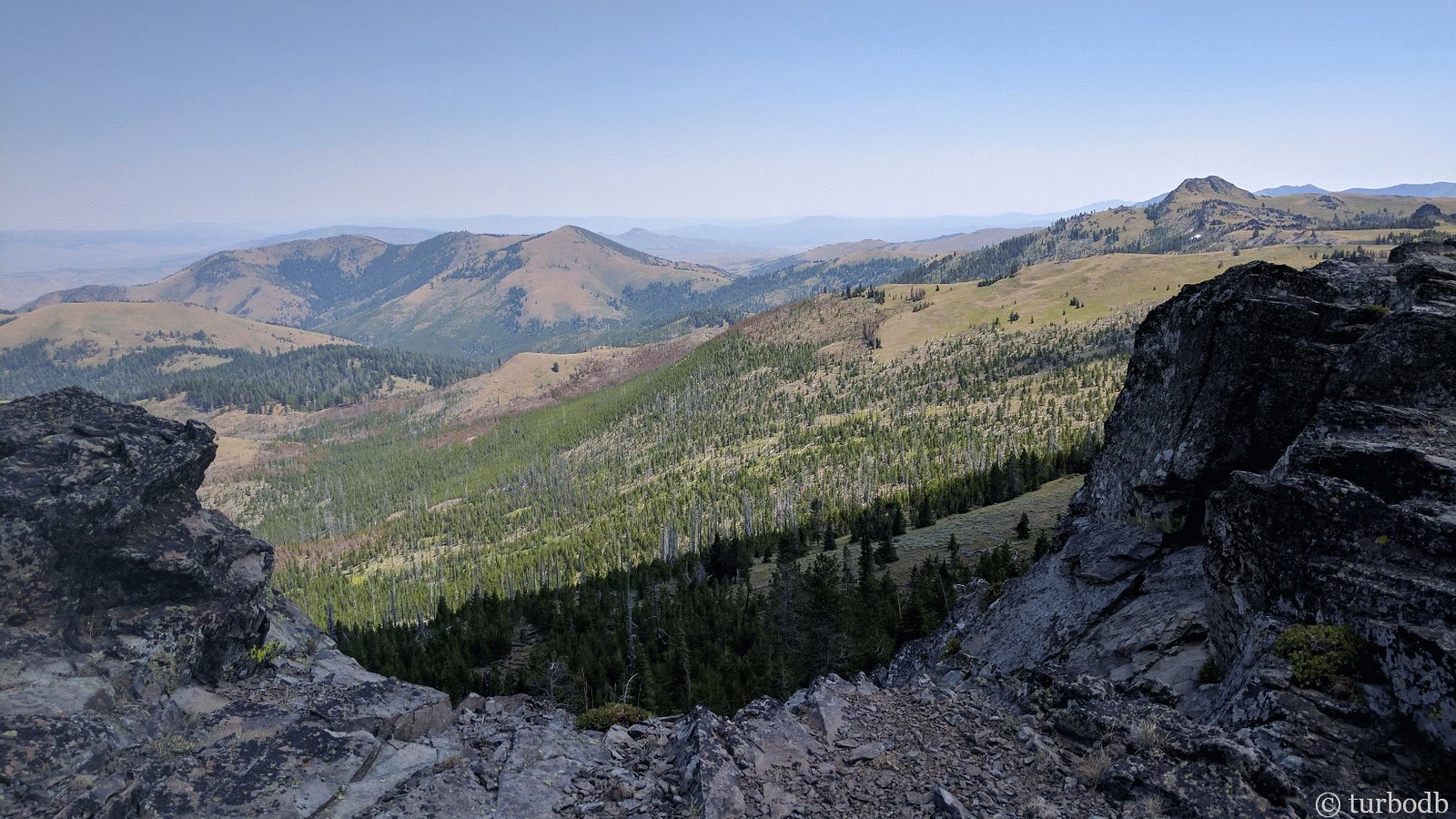





Unfortunately, when we reached the lookout, we discovered that the observer would have preferred that we stayed home. As we introduced ourselves, I asked Julie how long she was stationed on Table Rock each summer. "It used to be four months, but it's three this year due to budget cuts." And when I asked if she got many visitors, she replied "Enough to wreck it."
Hmm, guess we should be going then. (shortly later, she semi-qualified that the "locals with 4WD" were the real problem, in her opinion.)
We said our goodbyes, took a few pics, and gave each other a knowing look - we'd be heading back down to find some shade on the route, where we'd eat lunch in a more hospitable environment.


After lunch, we continued our trek toward Granite - through the Malheur National Forest, and the smoke that was starting to blow down through Washington and Oregon, from British Columbia, Canada.


And then, for the first (and ultimately only) time, we reached our destination early. Granite is a small ghost gold town, best described by the sign hanging out front:
Albert G. Tabor frist struck gold just below the present town of Granite on the 4th of July, 1862. Tabor named his claim The Independence since the strike was made on Independence Day, and the town that sprang up around the strike was also called Independence. However, the name was changed to Granite in 1876 when the people applied for a Post Office and found there was already an Independence, Oregon. Granite was a center of mining activity for over 80 years. Today activity has ceased with nothing remaining but the town and a wealth of history.
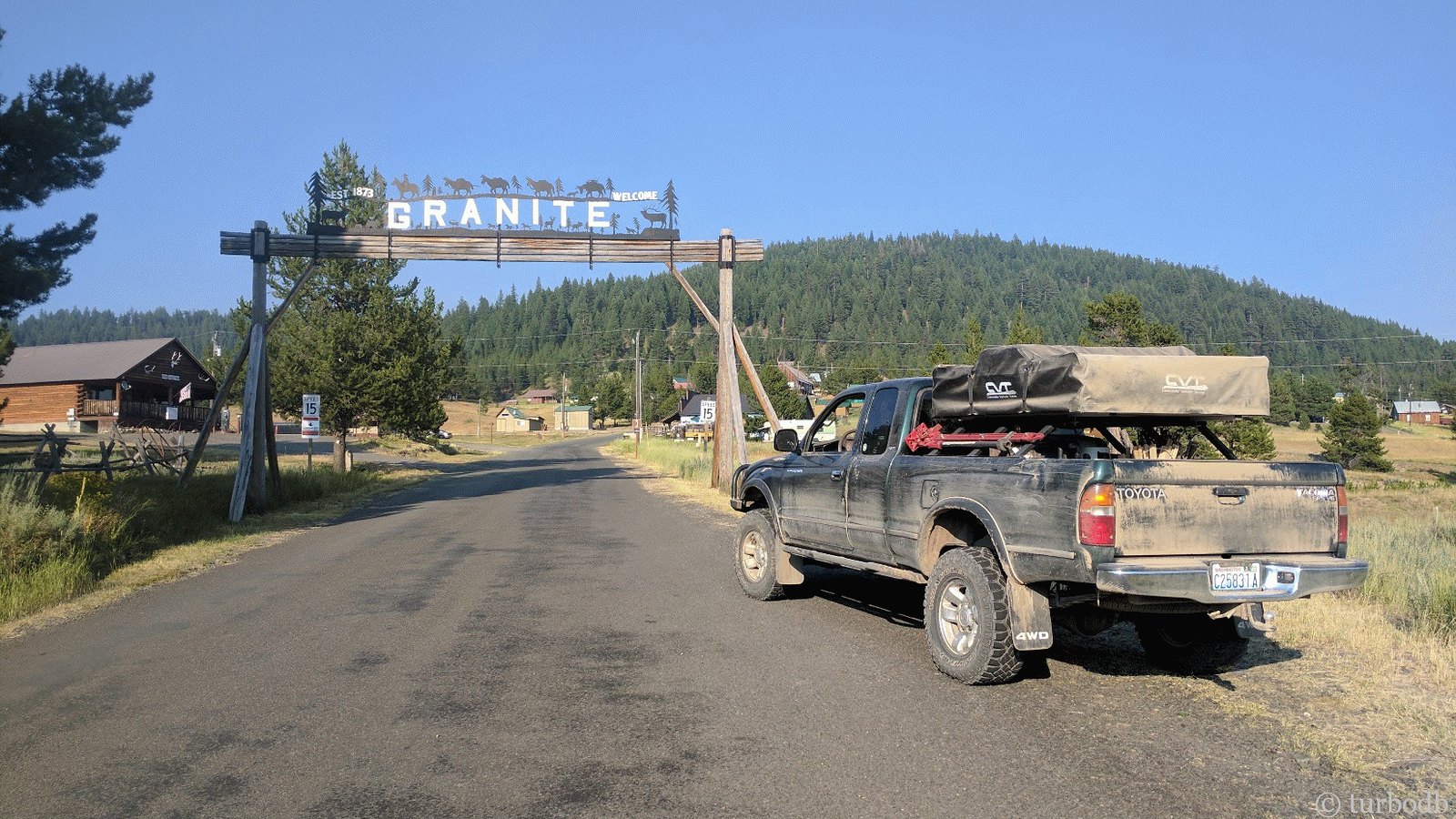

To say that there was a town or wealth of history remaining was a bit of an overstatement. The store/restaurant/gas station was closed before 6pm (when we arrived), and as we drove the two-block length of main street, we saw no one stirring at all.



With no reason to stay, we decided to get in a few more miles before calling it quits for the evening, so we headed back to the OBDR and out past the Fremont Power House and up to Olive Lake, where water was pumped through Redwood pipes to generate electricity for the mines.





We'd been considering staying in a campground at Olive Lake, to enjoy a swim and clean up a bit, but as we rolled in we were greeted by the sound of RV generators - the epitome of our dislike of campgrounds. So with that, we were back on the road within 10 minutes, where we found a spur to a hilltop that was a perfect spot to enjoy spicy sausages, grilled corn, and another amazing sunset.


Still relatively early, while @mrs.turbodb worked on her trip log, I played on the Ham radio and found a net based in Kennewick, WA - some 150 miles away - where I listened in for an hour before heading to bed.
It had been another day filled with adventure. We'd run the section of the OBDR that had brought us back, and this time, we'd won!




